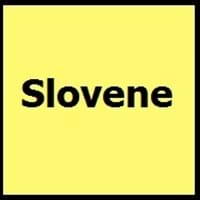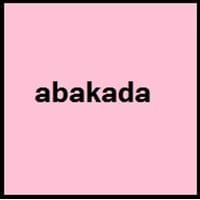Countries
European Union, Slovenia
Philippines
National Language
Austria, Croatia, Hungary, Italy, Slovenia
Philippines
Second Language
Not spoken in any of the countries
Filipinos
Speaking Continents
Europe
Asia, Australia
Minority Language
Austria, Hungary, Italy
Australia, Canada, Guam, Hong Kong, New Zealand, Singapore, United Kingdom
Regulated By
Slovenian Academy of Sciences and Arts
Komisyon sa Wikang Filipino, National Languages Committee
Interesting Facts
- The Freising Monuments is the oldest preserved records of written Slovene from 10th century.
- The first Slovene book was printed in 1550.
- In 1593, "Doctrina Christiana" was first book written in two versions of Tagalog.
- The name "Tagalog" means "native to" and "river". "Tagalog"is derived from taga ilog, which means "inhabitants of the river".
Similar To
Serbo-Croatian
Filipino, Cebuano and Spanish Languages
Derived From
Not Available
Not Available
Alphabets in
Slovene-Alphabets.jpg#200
Tagalog-Alphabets.jpg#200
Writing Direction
Left-To-Right, Horizontal
Left-To-Right, Horizontal
Thank You
Hvala
Salamat po
How Are You?
Kako se imate?
Kamusta ka na?
Good Night
Lahko noč
Magandang gabi
Good Evening
Dober večer
Magandang gabi po
Good Afternoon
Dober dan
Magandang hapon po
Good Morning
Dobro jutro
Magandang umaga po
Sorry
Oprostite
pinagsisisihan
I Love You
Ljubim te
Iniibig kita
Excuse Me
Oprostite
Ipagpaumanhin ninyo ako
Dialect 1
Prekmurje Slovene
Batangas Tagalog
Where They Speak
Hungary, Slovenia
Batangas, Gabon
How Many People Speak
Not Available
Where They Speak
Italy
Philippines
Dialect 3
Styrian
Filipino
Where They Speak
Slovenia
Philippines
How Many People Speak
Not Available
Speaking Population
Not Available
Second Language Speakers
Not Available
Native Name
Not available
Tagalog
Alternative Names
Slovenian, Slovenscina
Filipino, Pilipino
French Name
slovène
tagalog
German Name
Slowenisch
Tagalog
Pronunciation
[slɔˈʋèːnski ˈjɛ̀ːzik], [slɔˈʋèːnʃt͡ʃina]
[tɐˈɡaːloɡ]
Ethnicity
Slovenes
Tagalog people
Language Family
Indo-European Family
Austronesian Family
Subgroup
Not Available
Indonesian
Branch
Not Available
Not Available
Early Forms
No early forms
Proto-Philippine, Old Tagalog, Classical Tagalog, Tagalog
Standard Forms
Slovene
Filipino
Language Position
Not Available
Signed Forms
Not Available
Not Available
Scope
Individual
Individual
ISO 639 6
Not Available
Not Available
Glottocode
slov1268
taga1269
Linguasphere
53-AAA-f
31-CKA
Language Type
Living
Living
Language Linguistic Typology
Not Available
Object-Verb-Subject, Subject-Verb-Object, Verb-Object-Subject, Verb-Subject-Object
Language Morphological Typology
Fusional
Not Available
All Slovene and Tagalog Dialects
Most languages have dialects where each dialect differ from other dialect with respect to grammar and vocabulary. Here you will get to know all Slovene and Tagalog dialects. Various dialects of Slovene and Tagalog language differ in their pronunciations and words. Dialects of Slovene are spoken in different Slovene Speaking Countries whereas Tagalog Dialects are spoken in different Tagalog speaking countries. Also the number of people speaking Slovene vs Tagalog Dialects varies from few thousands to many millions. Some of the Slovene dialects include: Prekmurje Slovene, Resian. Tagalog dialects include: Batangas Tagalog , Bisalog. Also learn about dialects in South American Languages and North American Languages.
Slovene and Tagalog Speaking population
Slovene and Tagalog speaking population is one of the factors based on which Slovene and Tagalog languages can be compared. The total count of Slovene and Tagalog Speaking population in percentage is also given. The percentage of people speaking Slovene language is Not Available whereas the percentage of people speaking Tagalog language is 0.42 %. When we compare the speaking population of any two languages we get to know which of two languages is more popular. Find more details about how many people speak Slovene and Tagalog on Slovene vs Tagalog where you will get native speakers, speaking population in percentage and native names.
Slovene and Tagalog Language Codes
Slovene and Tagalog language codes are used in those applications where using language names are tedious. Slovene and Tagalog Language Codes include all the international language codes, glottocodes and linguasphere.





